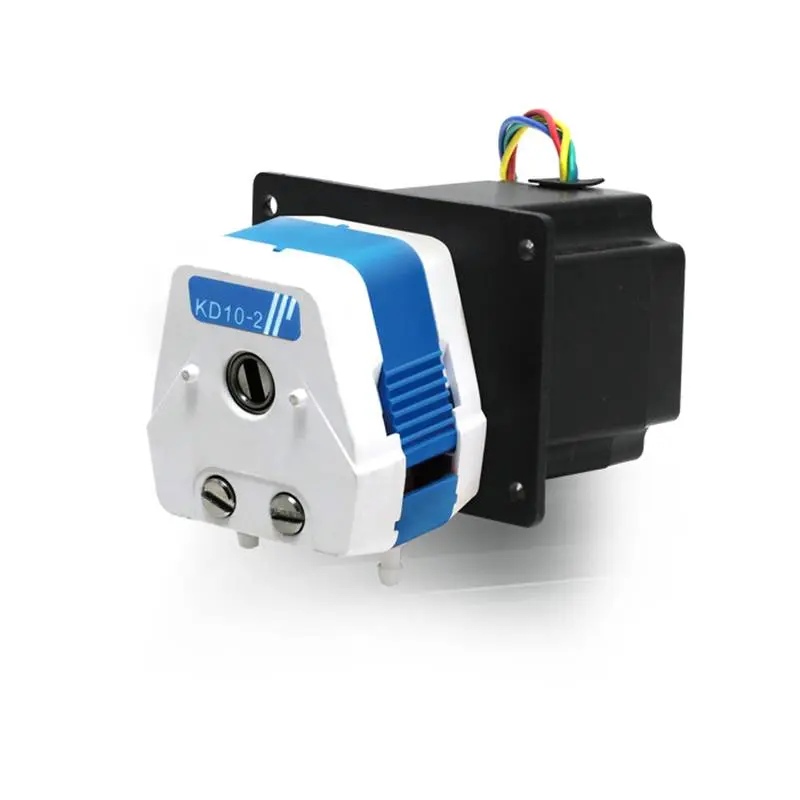China low flow peristaltic pump suppliers offer precise and gentle fluid handling, making them suitable for various applications in analytical instruments, medical devices, and biotechnological processes. Their compact design and accuracy make them invaluable tools in industries that require small volume dosing or measurements. Understanding the viscosity range suitable for peristaltic transfer pump is crucial for ensuring optimal performance and avoiding limitations when handling fluids of different viscosities.
Low Flow Peristaltic Pumps: Advantages and Applications

A. Advantages:
Precise and Accurate Fluid Transfer: Low flow peristaltic pumps offer exceptional precision and accuracy in fluid transfer, making them ideal for applications that require small volume dosing or measuring. The peristaltic action ensures consistent and controlled flow, minimizing the risk of errors or variations in the delivered volume.
Gentle Fluid Handling: The squeezing action of low flow peristaltic pumps is gentle on delicate fluids, including shear-sensitive or fragile samples. This feature is particularly crucial in industries such as pharmaceuticals, biotechnology, and food and beverage, where the integrity of the fluid needs to be maintained throughout the pumping process.
Compact and Space-Efficient Design: Low flow peristaltic pumps are often compact in size, allowing for easy integration into existing systems or equipment. Their space-efficient design makes them suitable for applications with limited space, such as analytical instruments, laboratory setups, or portable devices.
B. Applications:
Analytical and Laboratory Instruments: Low flow peristaltic pumps find extensive use in analytical instruments, such as liquid chromatography systems, spectroscopy devices, and sample preparation workflows. They enable precise delivery of small volumes of reagents, calibration standards, or samples, ensuring accurate and reliable results.
Medical and Biotechnological Applications: In medical and biotechnological fields, low flow peristaltic pumps are employed for drug delivery, cell culture, microfluidics, and other applications requiring precise fluid handling. Their ability to handle small volumes with high accuracy makes them invaluable tools in these industries.
Viscosity Range for Peristaltic Transfer Pumps: Considerations and Limitations
A. Understanding Viscosity in Peristaltic Pumping:
Viscosity and Flow Characteristics: Viscosity refers to a fluid’s resistance to flow and is a critical factor in peristaltic pumping. Peristaltic pumps are generally suitable for handling fluids with a wide viscosity range, from low-viscosity liquids to certain moderately viscous fluids.
Limitations with High Viscosity Fluids: While peristaltic transfer pumps can handle a range of viscosities, there are limitations with highly viscous fluids. Extremely high-viscosity fluids may require higher torque or specialized pump designs to overcome the increased resistance during pumping. In such cases, alternative pumping technologies, such as gear pumps or diaphragm pumps, may be more suitable.
B. Considerations for Peristaltic Pump Viscosity Range:
Tubing Selection: The choice of tubing material and size plays a crucial role in determining the viscosity range that a peristaltic pump can handle effectively. Different tubing materials have varying compatibility with fluids of different viscosities. It is essential to consult the pump manufacturer’s guidelines and select tubing that is suitable for the intended viscosity range.
Pump Design and Configuration: Peristaltic pumps with larger rollers or higher torque capabilities can handle higher viscosity fluids more effectively. Additionally, pumps with adjustable speed controls allow for fine-tuning the pumping parameters to optimize performance within the desired viscosity range.
Testing and Validation: It is recommended to conduct preliminary tests and validations with the specific fluid of interest to ensure that the peristaltic pump performs satisfactorily within the desired viscosity range. This process helps identify any limitations or adjustments required for optimal fluid transfer.